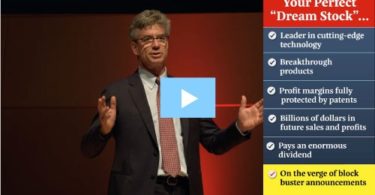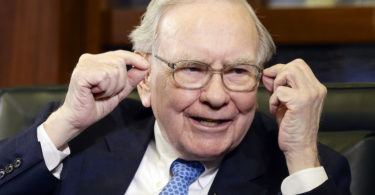Company Overview and Phase 3 Expansion
Summit Therapeutics Inc. (NASDAQ: SMMT) is a clinical-stage biopharmaceutical company focused on oncology, best known for in-licensing ivonescimab – a novel bispecific antibody that targets PD-1 and VEGF ([1]). Ivonescimab is Summit’s lead (and essentially sole) development candidate ([1]), being developed primarily for non-small cell lung cancer (NSCLC). The company has rapidly advanced multiple Phase 3 trials for ivonescimab in NSCLC, often branded under the “HARMONi” trial series. Notably, Summit recently broadened its HARMONi-3 Phase 3 trial to include both squamous and non-squamous NSCLC histology, expanding the potential patient population ([2]). This Phase 3 trial expansion, along with strong early data, has fueled investor optimism and a surge in SMMT’s stock price ([3]).
Summit’s aggressive clinical program follows striking trial results for ivonescimab. In a Chinese head-to-head study (conducted by Summit’s partner Akeso), ivonescimab combined with chemotherapy more than doubled median progression-free survival (PFS) to over 11 months, vs. ~5.8 months on Merck’s Keytruda ([3]) ([3]). This corresponds to a 49% reduction in risk of disease progression ([3]) – a dramatic efficacy signal that led Summit’s shares to surge over 30% in response. Summit is also reporting statistically significant PFS benefits in its global Phase 3 trial for EGFR-mutated NSCLC (post-TKI therapy) ([4]). Additionally, ivonescimab is approved in China as a monotherapy for first-line PD-L1–positive NSCLC (based on Akeso’s data) and has shown superiority over a PD-1 inhibitor (tislelizumab) plus chemo in first-line squamous NSCLC ([4]) ([4]). These encouraging outcomes underpin Summit’s Phase 3 expansions and have positioned ivonescimab as a potential first-in-class therapy in a hotly competitive field.
Dividend Policy and Shareholder Return
As a development-stage biotech with no marketed products or profits, Summit has no dividend history and does not anticipate paying any cash dividends in the foreseeable future ([1]) ([1]). The company has never declared a dividend on its common stock and intends to reinvest all resources into R&D and pipeline development ([1]). Consequently, Summit’s shareholders must look solely to capital appreciation for any return – indeed SMMT’s recent surge has been entirely driven by pipeline progress and speculation rather than income yield. Traditional REIT metrics like AFFO/FFO are not applicable here; Summit generates no recurring operating funds (it recorded a net loss of $221 million in 2024) ([1]), and it relies on external financing rather than cash flow from operations. In short, dividend yield is 0%, and likely to remain so, as Summit prioritizes funding its clinical programs over returning cash to shareholders ([1]).
Leverage, Financing, and Debt Maturities
Summit’s ambitious development plans – including a $500 million upfront license fee for ivonescimab – have required substantial funding. Rather than traditional debt, Summit primarily financed these investments through equity raises and insider loans. In late 2022, Summit’s Chairman and CEO, biotech billionaire Robert W. Duggan, and his associate Dr. Zanganeh provided $520 million via promissory notes to fund the Akeso license ([1]) ([1]). These notes carried a hefty interest rate (initially 7.5%, later 12%+) and were intended as bridge financing ([1]) ([1]). Summit eliminated most of this insider debt by converting it to equity and repaying it once new capital was raised – for example, a 2023 rights offering helped retire a $400 million note owed to Mr. Duggan ([1]) ([1]). By October 2024, the remaining promissory notes were fully paid off ([1]) ([1]).
2 min
- Mint Co. — Payment rails + 4.1% yields
- Platform Leader — Exchange & custody powerhouse
- Infrastructure Giant — Backbone tech, fees on every transaction
**Today, Summit carries essentially zero long-term debt. Total liabilities plunged to just $46.8 million as of year-end 2024 (from $125.3 million a year prior) after the note repayment ([2]). The balance sheet is mostly cash-funded: Summit held a strong $412 million cash and short-term investments at 2024’s close ([2]). This war chest was built through several equity infusions during 2023-2024: Summit raised $434.9 million in gross proceeds via private placements in 2024 alone ([1]). Notably, Baker Bros. Advisors – a top biotech investor – led a $200 million private investment in June 2024, buying 22.22 million shares at $9.00 each ([5]). In September 2024, Summit capitalized on its soaring stock price (then ~$22.70) to raise another ~$235 million from institutional investors and insiders ([1]) ([1]). In fact, Summit’s management team personally invested ~$79 million in that September 2024 financing (including Mr. Duggan, who is the majority shareholder) – a significant vote of confidence ([1]). With no debt service obligations now and cash to fund operations into 2025, leverage is low and near-term debt maturities are a non-issue. Summit’s interest coverage is not a concern given the absence of debt – the company’s real “coverage” focus is ensuring it has sufficient cash to cover ongoing R&D burn. (Operating cash outflows were ~$142 million in 2024 ([1]), and R&D expenses are rising as Phase 3 trials expand.) If ivonescimab’s development stays on track, Summit’s current cash plus any partnership proceeds should support it through pivotal trials; if not, further equity dilution could occur (a typical risk for pre-revenue biotechs).
Valuation and Comparables
Conventional valuation metrics like P/E or P/FFO do not apply to Summit – with negative earnings and no FFO, Summit’s value is entirely based on pipeline potential**. And investors have assigned hefty value to that potential: after the Phase 3 successes, Summit’s market capitalization ballooned to roughly $17.4 billion by mid-2025 ([6]). This valuation reflects expectations that ivonescimab could become a blockbuster immunotherapy, possibly through a lucrative commercialization partnership with Big Pharma. For instance, in July 2025 rumors emerged that AstraZeneca was negotiating to license ivonescimab in a deal worth up to $15 billion ([7]). Reports suggested a multi-billion dollar upfront payment was on the table ([7]), though Summit was also in talks with other potential partners and no agreement was certain ([7]) ([7]). Summit’s stock jumped on the news, underscoring how much of its valuation hinges on landing a deep-pocketed partner.
How reasonable is a ~$17 billion valuation? One way to gauge it is by comparing recent deals for similar PD-1/VEGF combo drugs. In November 2024, Merck paid $588 million upfront (and up to $3.3 billion total) to license an early-stage PD-1xVEGF antibody from China’s LaNova Medicines ([8]) ([8]). That deal was motivated in part by ivonescimab’s impressive showing against Keytruda ([8]) – highlighting Big Pharma’s interest in such bispecifics. Another comp: in 2023 Bristol Myers Squibb inked a partnership valued around $11 billion for BioNTech’s PD-L1xVEGF bispecific, which is slightly behind Summit’s in development ([6]). BMS agreed to $1.5 billion upfront plus $2 billion in near-term payments for a 50/50 co-development of BioNTech’s asset ([6]). By those benchmarks, a successful ivonescimab could indeed warrant a multi-billion deal. However, Summit’s current market cap already prices in a very optimistic scenario. Analysts at SVB Leerink have noted that to truly justify investors’ excitement, a partner might need to commit around $7.7 billion in upfront cash (with perhaps ~$10 billion in milestones) for ivonescimab ([6]). Such terms would be rich, and Leerink expresses doubt that any pharma will pay that much up-front for a single-asset company ([6]) ([6]) – especially given Summit has no other revenue streams. In essence, the stock’s valuation implies expectations of near-flawless execution: successful Phase 3 outcomes, a mega-deal with a top pharma, and eventual FDA approval and significant oncology market share. This leaves little margin for error – any shortfall in deal size or clinical results could lead to a sharp correction.
Risks and Red Flags
While Summit’s story is compelling, there are clear risks and potential red flags investors should weigh:
– Single-Asset Dependence: Summit is essentially a one-product company – ivonescimab is its sole major asset in development ([1]). Failure of this drug (or even a minor setback in trials) would be devastating. Even if ivonescimab succeeds, a one-drug portfolio means less diversification of revenue sources. Summit has no approved products to fall back on and has discontinued its earlier pipeline (e.g., prior antibiotic programs) to focus on oncology.
– Clinical and Regulatory Risk: Ivonescimab, though promising, is still in trials and not approved outside China. U.S. and EU regulators will require robust evidence of not just PFS but also overall survival (OS) benefit and safety in diverse populations. Notably, a Chinese Phase 3 (Akeso’s trial) indicated a positive OS trend versus Keytruda but without statistical significance at interim analysis ([7]). If final OS data do not convincingly favor ivonescimab, uptake could be limited. The drug’s novel mechanism (two-in-one antibody) could also present unforeseen safety or manufacturing challenges as trials scale up. Regulatory timelines are a concern: Summit is still likely years away from U.S. approval and commercialization, giving competitors time to entrench or innovate. As J.P. Morgan’s analysts cautioned, Keytruda is unlikely to face serious threat for now because Summit’s therapy is “still years away” from market entry ([3]).
– Competitive Landscape: The PD-(L)1 + VEGF space is crowded and heating up. Pharma giants are actively securing similar assets (Merck’s deal with LaNova, BMS with BioNTech, Pfizer and others reportedly eyeing candidates ([6])), aiming to combine them with their own portfolios. Summit is in a race against better-capitalized players. By the time ivonescimab hits the market, it may compete with multiple PD-1 combo therapies from Big Pharma. Moreover, Merck’s Keytruda itself is a moving target – it’s a $25 billion per year behemoth nearing patent expiry ([8]), and Merck will aggressively defend its franchise (through new combos like the LaNova drug, or next-gen immunotherapies). Pricing and reimbursement could also be a battleground; payors may be skeptical of covering a costly new drug without clear OS advantage over Keytruda or its biosimilars. In short, Summit faces competitive and market access risks even if its clinical data are strong.
– Financial and Dilution Risk: Despite its current cash, Summit’s R&D burn rate is accelerating (non-GAAP R&D was $79 million in Q2 2025 alone, up from $27 million in Q2 2024) ([4]). The company will likely need more capital if a hefty partnership deal isn’t sealed relatively soon. This could mean additional stock offerings (diluting existing shareholders) or taking on debt. Summit’s share count has already exploded – from ~193 million in 2022 to ~738 million shares outstanding by early 2025 ([1]) ([1]) – largely due to equity financing. Future dilution remains a risk if development costs outpace resources or if Summit ambitiously pursues commercialization on its own.
– Governance and Control: Summit is a “controlled company” under NASDAQ rules, as Mr. Duggan owns over 70% of the voting stock ([1]). He can single-handedly influence all major decisions and board appointments. While it’s positive that insiders have skin in the game (and indeed Mr. Duggan and team injecting capital shows commitment), such dominance raises governance concerns. The interests of minority shareholders might be subordinated to those of the controlling holder. Additionally, Summit’s top management has an unusual structure: Robert Duggan (Executive Chairman and co-CEO) and Dr. Maky Zanganeh (co-CEO and President) are married to each other ([1]). This close relationship, combined with majority control, means corporate oversight is heavily concentrated. Any unexpected disruption to this leadership duo could be impactful – and there is no key person insurance on executives ([1]). Investors should be mindful of the risks that come with insider control and potential conflicts of interest in such arrangements.
– Manufacturing and Partnership Dependence: Summit relies on Akeso for the manufacturing of ivonescimab and for sharing Asian clinical data ([1]). This dependence on a third-party (foreign) partner can pose regulatory and operational risks. Summit will need a smooth tech transfer and supply chain for global trials and eventual sales. Any strain in the Summit–Akeso collaboration (e.g. disagreement on strategy or data sharing) could hurt development. Furthermore, without an eventual commercial partner, Summit would need to build marketing and distribution capabilities from scratch – a tall order for a 159-employee company ([1]). The company openly acknowledges it has no salesforce experience and would likely outsource or partner for commercialization if ivonescimab is approved ([1]) ([1]).
In summary, Summit’s investment case carries above-average risk: it hinges on one experimental drug in a competitive field, requires flawless execution, and is backed by an insider-controlled governance structure. These vulnerabilities warrant careful monitoring, even as the upside potential is significant.
Open Questions and Outlook
Summit Therapeutics has generated substantial excitement with ivonescimab’s Phase 3 progress, but several open questions will determine whether this surge is sustainable:
– Will Summit Strike a Major Partnership? The biggest near-term question is if (and when) Summit will finalize a licensing or co-development deal with a large pharmaceutical company. A rumored AstraZeneca deal worth up to $15 billion ([7]) has yet to materialize. What upfront payment can Summit secure, and will it meet lofty investor expectations (e.g. ~$7+ billion upfront as analysts suggest) ([6])? A rich partnership could validate ivonescimab’s value and fund Summit through commercialization. Conversely, a delay or lack of a deal might force Summit to raise capital again on its own, or even make the company an acquisition target.
– How Strong Will the Phase 3 Data be at Completion? Thus far ivonescimab has shown impressive PFS improvements. But the final overall survival data from the ongoing trials – especially the global HARMONi trial in EGFR-mutant NSCLC and the HARMONi-3 first-line trial – are critical. Will ivonescimab demonstrate a statistically significant OS benefit over current standards of care? The answer will impact regulatory approval prospects and physician uptake. Interim data from China are encouraging but not definitive ([7]). Upcoming readouts (for example, Summit expects top-line HARMONi data by mid-2025 ([2])) will be closely watched. Any surprise safety signals or efficacy shortfall could change the narrative drastically.
– What is Summit’s Commercialization Plan? If ivonescimab stays on track, Summit could file for FDA approval perhaps by 2025 or 2026 (especially given Fast Track designation for one indication ([2])). Does Summit plan to commercialize ivonescimab itself in the U.S. or rely on a partner’s sales force? Currently, Summit’s lean organization (under 200 employees) seems inadequate for a global oncology launch ([1]). Management will need to clarify whether they envision building out marketing capabilities or focusing on R&D while a bigger partner handles sales. The answer likely ties back to the partnership question – a co-commercialization deal might allow Summit to participate in sales with limited infrastructure, whereas no deal might push Summit to consider hiring a commercial team or selling the company.
– How Will Competitors Respond? The competitive response is another open question. Merck, for instance, will likely have more data from its own PD-1xVEGF candidate (from LaNova) in coming years. Will Keytruda + chemotherapy remain the dominant frontline regimen by the time ivonescimab launches, or will new combinations (perhaps even ivonescimab combined with other agents – Summit has a combo trial with Revolution Medicines’ RAS inhibitors underway ([4])) become standard? Summit’s ability to differentiate ivonescimab – possibly positioning it after EGFR TKI failure or in PD-L1 high tumors – will be key. Investors will be looking for signals of how ivonescimab might fit into evolving treatment paradigms, and whether it can maintain a first-mover advantage among bispecific immunotherapies.
– Can Summit Maintain its Financial Strength? With a cash balance of ~$412 million at end of 2024 ([2]), Summit has some runway, but its quarterly burn is rising. If a big upfront partnership check comes in, Summit’s funding needs would be solved overnight. If not, how long can current cash last, especially as multiple Phase 3 trials run in parallel and new combo studies (like with Pfizer’s Seagen ADCs ([2])) start? The company reduced its annual net loss in 2024 (a 64% decrease year-on-year) ([2]) mainly because the one-time 2023 license payment was behind it, but R&D expenses are climbing again in 2025 ([4]). Summit will need to balance advancing ivonescimab robustly with conserving cash. Any misstep here – e.g. having to do a dilutive share offering at an inopportune time – is a risk to watch.
In conclusion, Summit Therapeutics presents a high-risk, high-reward profile. The ongoing Phase 3 trial expansion and strong preliminary results have created significant momentum – rightly captured in the phrase “Don’t Miss This Surge!” The company’s next chapters will be defined by how it capitalizes on this momentum: securing the right partnerships, delivering conclusive trial results, and navigating competitive and financial challenges. Investors should stay tuned as 2025 unfolds, because the answers to these open questions will ultimately determine if Summit’s stock surge is justified – or if it overshot reality. With a capable management team (the same team that brought Pharmacyclics’ Imbruvica to market) and deep insider commitment, Summit has a fighting chance to realize its vision. But until ivonescimab clears regulatory and commercial hurdles, caution is warranted alongside the excitement. This is a story to watch closely, with due diligence, in the coming months.
Sources
- https://sec.gov/Archives/edgar/data/1599298/000159929825000048/smmt-20241231.htm
- https://stocktitan.net/news/SMMT/summit-therapeutics-reports-financial-results-and-operational-1swnylds3osv.html
- https://reuters.com/business/healthcare-pharmaceuticals/summit-shares-surge-cancer-drug-tops-keytruda-head-to-head-study-2024-09-09/
- https://stocktitan.net/news/SMMT/summit-therapeutics-reports-financial-results-and-operational-q3sms2tb1xne.html
- https://sec.gov/Archives/edgar/data/1599298/000119312524152309/d768276d8k.htm
- https://fiercebiotech.com/pharma/15b-deal-rumor-astrazeneca-summit-needs-77b-upfront-excite-investors-analyst
- https://reuters.com/business/healthcare-pharmaceuticals/summit-considers-up-15-billion-partnership-with-astrazeneca-bloomberg-news-2025-07-03/
- https://reuters.com/business/healthcare-pharmaceuticals/merck-signs-33-bln-deal-experimental-cancer-drug-2024-11-14/
For informational purposes only; not investment advice.




